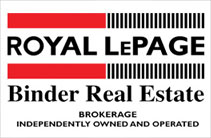Buyers
Preparing To Buy: Are You Financially Ready?
How can you know if you are financially ready to become a homeowner? Before making a decision, it is a good idea to figure out your current financial situation, and the maximum home price that you should consider.
How Much are You Spending Now?
Calculate Your Household Expenses
Start figuring out your financial readiness by evaluating your present household budget. How much are you spending each month? Knowing exactly how much, will give you a better idea about whether you can afford to become a homeowner.
You may wish to use the CMHC Household Budget Calculator to complete your current household budget now.
Calculate Your Monthly Debt Payments
Do you know how much debt you are carrying? You need this information to figure out whether you are financially ready for homeownership. If you decide to buy a home, mortgage lenders will ask for this information.
Calculate Your Total Monthly Expenses
Your total monthly expenses are your household expenses plus your debt payments. To calculate your monthly expenses, add the total from the Current Household Budget as Homeowner to the total from Monthly Debt Payments form.
How Much Can You Afford?
Before you begin shopping for a home, it’s important to know how much you can afford to spend on homeownership. You will want to plan ahead for the various expenses related to homeownership. In addition to purchasing the home, other significant expenses will include heating, property taxes, home maintenance and renovation as required. Two simple rules can help you figure out how much you can realistically pay for a home. You must understand these rules to understand if you will be able to get a mortgage.
Affordability Rule 1
The first rule is that your monthly housing costs shouldn't be more than 32% of your gross monthly income. Housing costs include your monthly mortgage payments (principal and interest), property taxes and heating expenses. This is known as PITH for short — Principal, Interest, Taxes and Heating.
Affordability Rule 2
The second rule is that your entire monthly debt load should not be more than 40% of your gross monthly income. Your entire monthly debt load includes your housing costs (PITH) plus all your other debt payments (car loans or leases, credit card payments, lines of credit payments, etc.). You have calculated these on the Monthly Debt Payments form. This figure is called your Total Debt Service (TDS) ratio.
Your Maximum House Price
The maximum home price that you can realistically afford depends on a number of factors. The most important factors are your household gross monthly income, your down payment and the mortgage interest rate. For many people, the hardest part of buying a home — especially their first one — is saving the necessary down payment.
Use a mortgage calculator to figure out the maximum home price you can afford. You will also need to calculate the maximum mortgage amount you can borrow, and your monthly mortgage payments (including principal and interest).
Do Your Calculations Look Encouraging?
What is your current financial situation? After doing the calculations, do you feel fairly confident about beginning the homebuying process? You’re ready to proceed with homeownership.
Do Your Calculations Look Discouraging?
You may need to step back and make some improvements. Did your calculations show that you might have trouble meeting monthly debt payment? If that’s the case, you may find it difficult to get approved for a mortgage. Here are some things you can do to improve your situation:
- Pay off some loans first.
- Meet with a credit counsellor. He (or she) can help you figure out how to minimize your debts.
- Save for a larger down payment.
- Take another look at your current household budget to see where you can spend less. The money you save can go towards a larger down payment.
- Lower your home price — remember that your first home is not necessarily your dream home.
You may also want to look at the additional costs of buying a home when organizing your finances.
What are Your Next Steps?
Getting Pre-Approved
If you are ready to move forward, receiving pre-approved home financing can make things easier. Once you have your pre-approval you will know what price range you should be looking at before you even get started. Pre-approval will also help you to be protected against interest rate increases while you find the right home.
Once you're pre-approved, you can start thinking about the right home that meets your needs.




